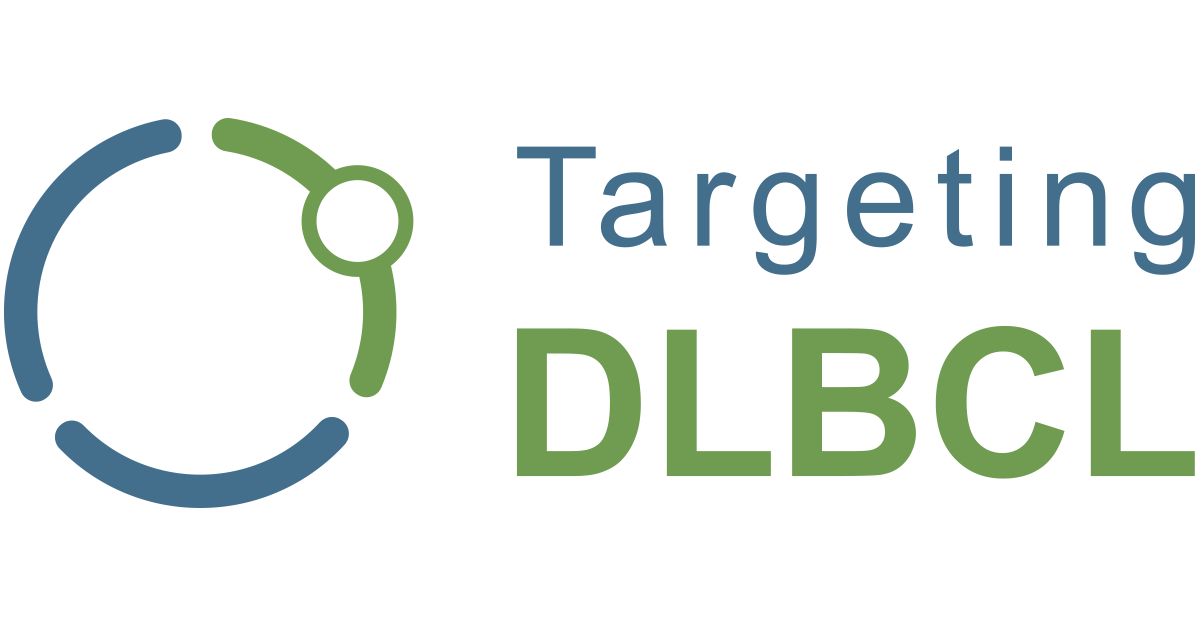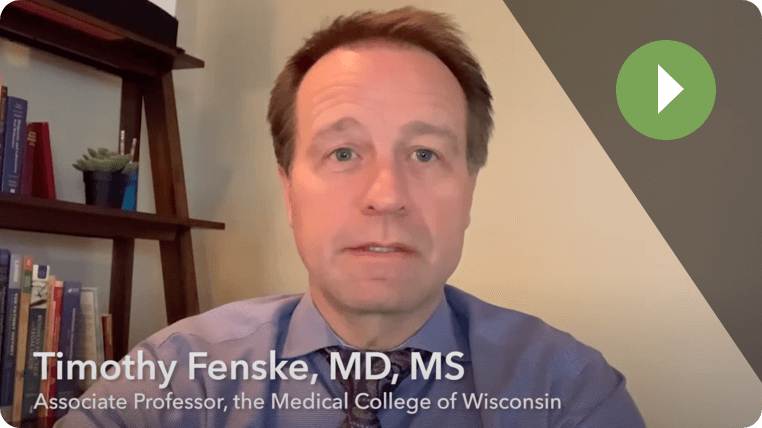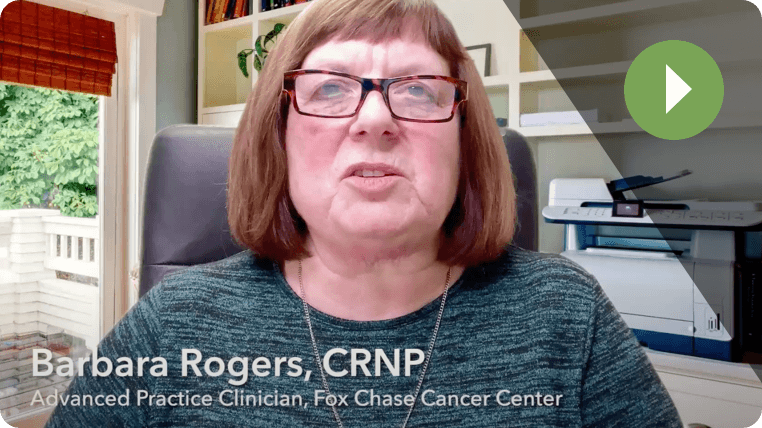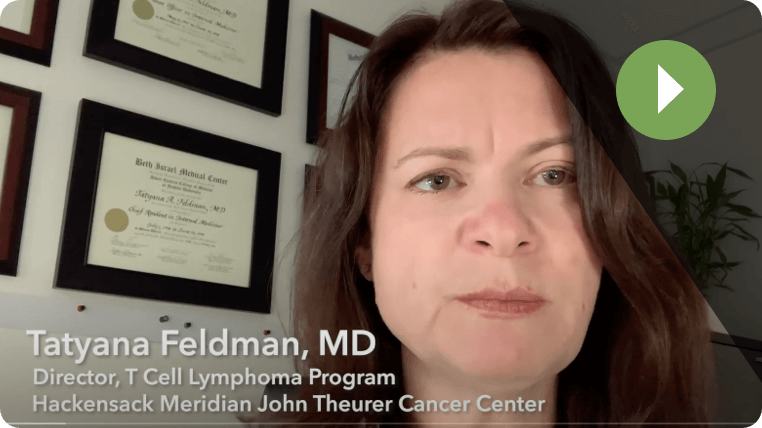DLBCL remains an aggressive disease for many patients— regardless of their age, gender, race, or disease site
DLBCL, diffuse large B-cell lymphoma.
Lymphomas are the 4th most common cancer and the 6th leading cause of US cancer deaths1
- Non-Hodgkin disease is the most common type of lymphoma, with an estimated 77,240 new cases and 19,940 deaths in 20202
- DLBCL is the most common subtype of non-Hodgkin lymphoma, comprising 25% of all mature NHL cases in the US1
- Heterogeneous in nature, DLBCL leads to variable patient outcomes3,4
- DLBCL is curable—but aggressive when treatment fails5,6

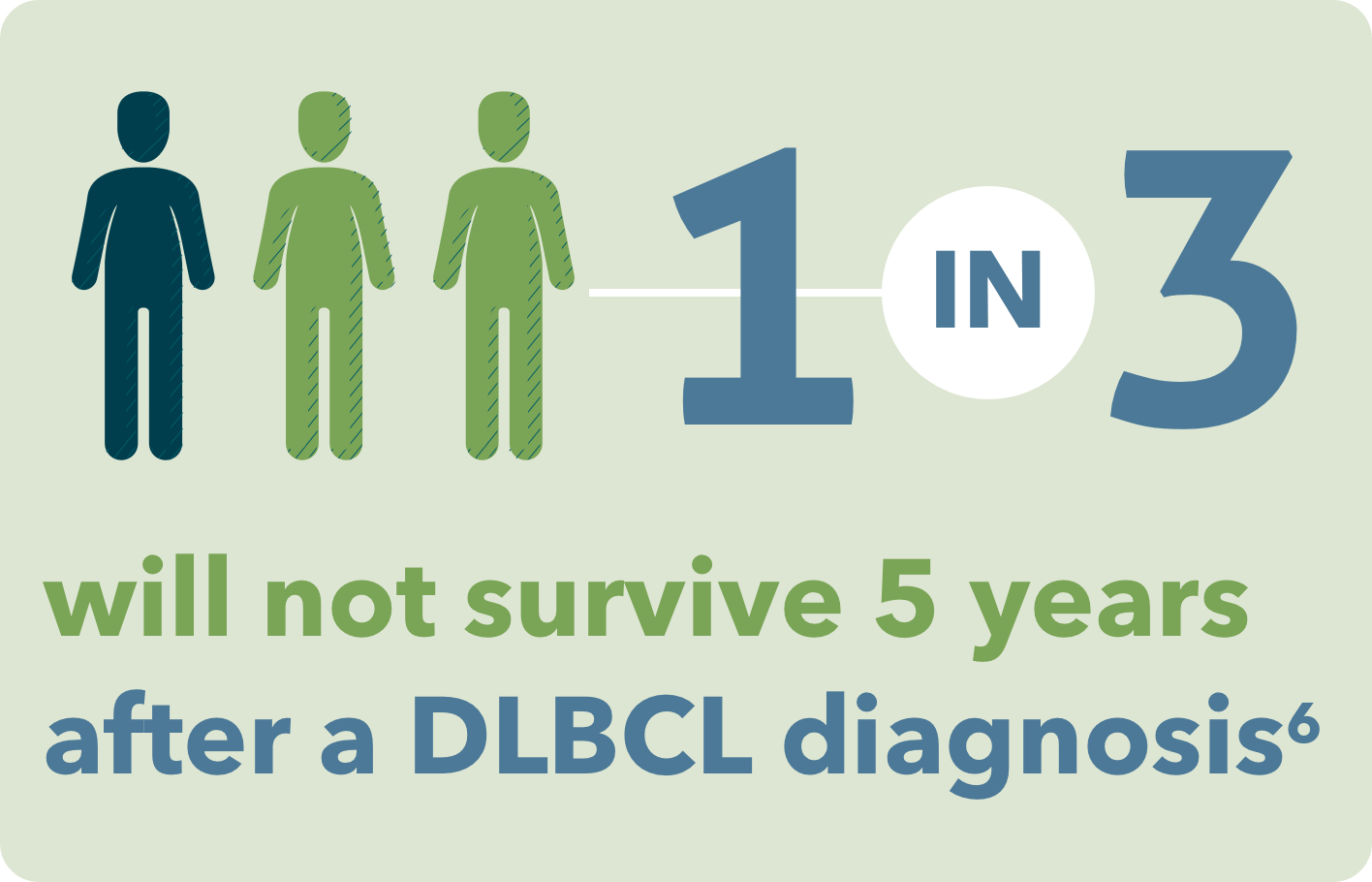
There’s an opportunity of cure, but for many, DLBCL remains a rapidly progressing disease5,7,8
First-line: R-CHOP
R-CHOP in 1L cures 50% to 60% of patients, while a substantial proportion of patients develop r/r disease.5,7,8
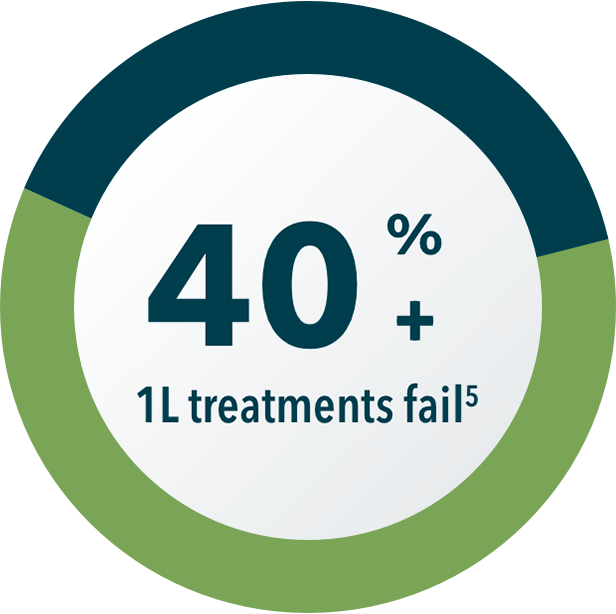
r/r, recurrent/refractory.
These variable patient outcomes are due in part to the unique biology of underlying disease subtypes4,9:
- Different cell of origin classes (germinal center B-cell-like, activated B-cell-like)9
- Double and triple hit lymphomas with genetic rearrangements9
Poor outcomes may also be seen in older patients, who have a worse prognosis due to11,12:
- Higher likelihood of high-risk disease subtype11
- Organ function decline, which can limit tolerability12
- Comorbidities that may prevent the use of most effective treatment11
Attempts to improve outcomes in specific subgroups have had limited success10
Second-line: Stem Cell Transplant
While curative, stem cell transplant (SCT) helps ~10% of people13
- Only half of patients with r/r DLBCL will be eligible for SCT13
- Of these, only half will respond to 2L salvage therapy and go on to SCT13
- Only 1 in 10 patients with r/r DLBCL are cured with SCT13
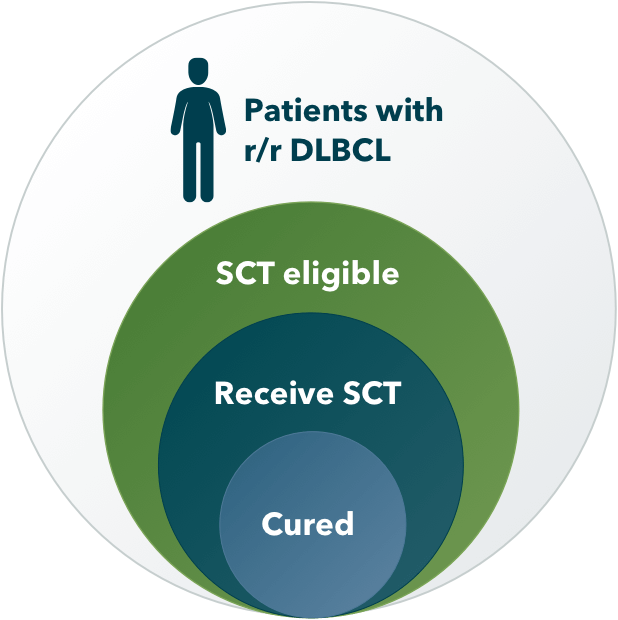
Current regimens for later lines typically involve complex and onerous regimens associated with toxicity but have a lower chance for a cure13-16
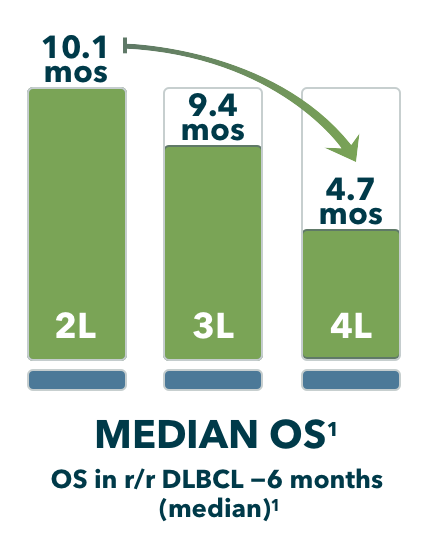
At the same time, the burden continues for patients. With every treatment decision, patients must face14,16-19:
- Multiagent regimens
- Exposure to more toxicities
- Extensive time commitment
- Financial responsibility
Under these circumstances, increasingly fewer patients continue treatment with each line beyond 2L13-16
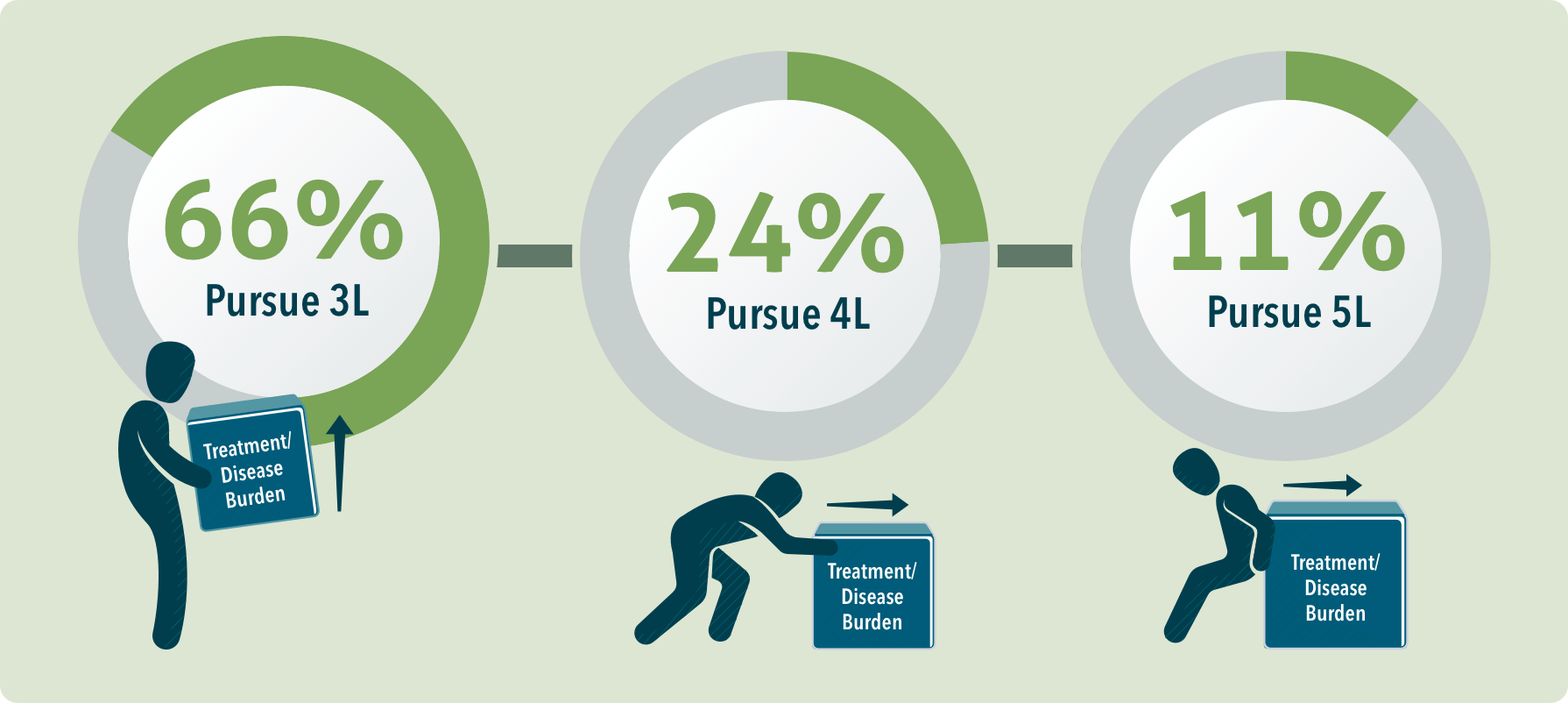
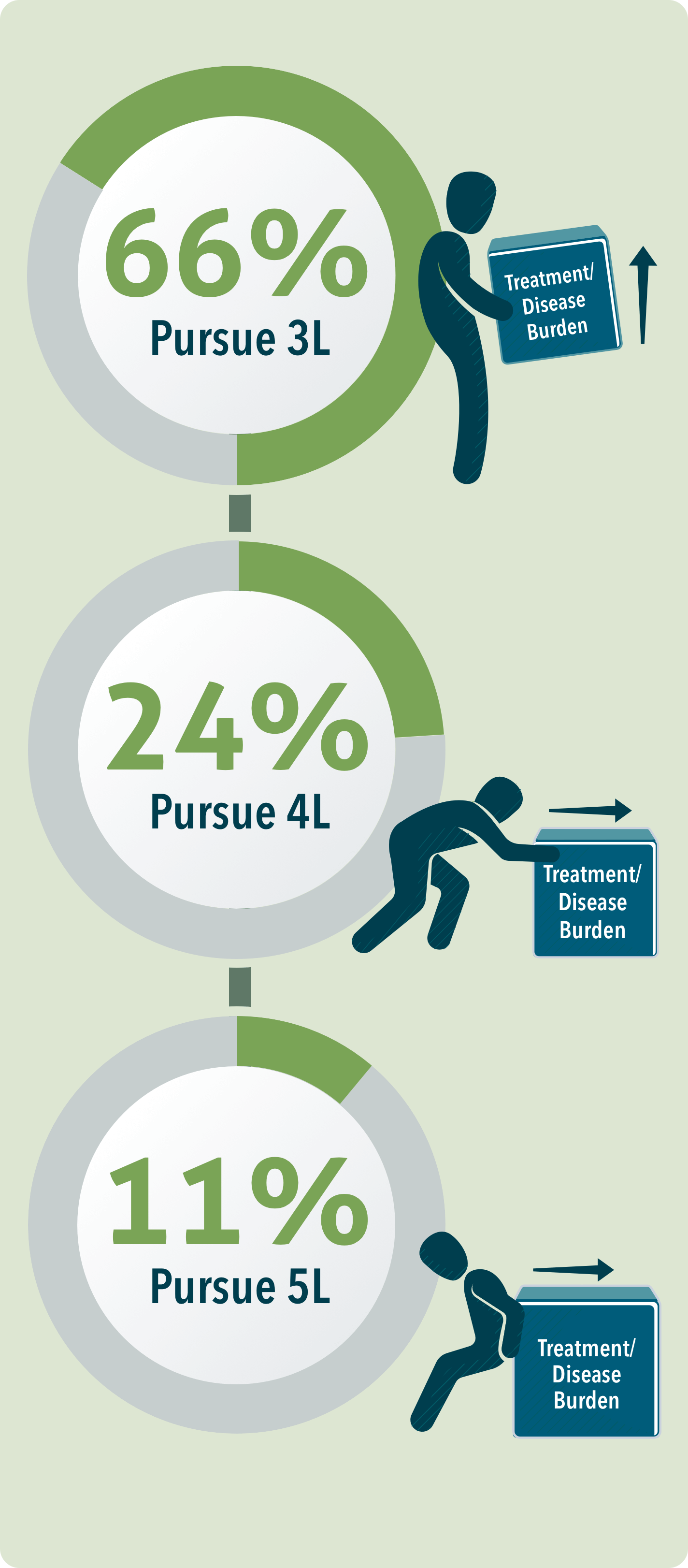
Different approaches that consider both outcomes and demands of treatment in later lines are urgently needed for many patients with r/r DLBCL
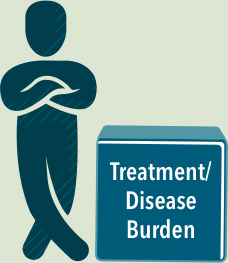
Watch healthcare professionals share information about r/r DLBCL in the videos below
References: 1. Teras LR, et al. CA Cancer J Clin. 2016;66(6):443-459. 2. National Cancer Institute. https://seer.cancer.gov/statfacts/html/nhl.html. Accessed December 7, 2020. 3. NCCN Clinical Practice Guidelines in Oncology (NCCN Guidelines®) B-cell lymphomas. Version 4.2020. August 13, 2020. 4. Nowakowski GS, Blum KA, Kahl BS, et al. Beyond RCHOP: a blueprint for diffuse large B cell lymphoma research. J Natl Cancer Inst. 2016:108(12):djw257. 5. Coiffier B, Thieblemont C, Van Den Neste E, et al. Blood. 2010;116(12):2040-45. 6. National Cancer Institute. Cancer stat facts: NHL—diffuse large B-cell lymphoma (DLBCL). https://seer.cancer.gov/statfacts/html/dlbcl.html. Accessed November 9, 2020. 7. Coiffier B, et al. N Engl J Med. 2002;346:235-242. 8. Gisselbrecht C, Van Den Neste E. Br J Hematol. 2018;182:633-643. 9. Sehn LH, Gascoyne RD. Blood. 2015;125:22-32. 10. Liu Y, Barta SK. Am J Hematol. 2019;94:604-616. 11. Sarkozy C, et al. Clin Cancer Res. 2013;19(7):1660-1669. 12. Saygin C, et al. Am J Hematol. 2017;92(10):989-996. 13. Friedberg JW. Hematology Am Soc Hematol Educ Program. 2011;498-505. 14. Hodgson DC. Clin Adv Hematol Oncol. 2015;13(2):103-112. 15. Neelapu SS. Hematol Oncol. 2019;37(suppl 1):48-52. 16. Purdum A, et al. Oncologist. 2019;24(9):1229-1236. 17. Klink AJ, et al. J Clin Pathways. 2020;6(1):44-53. 18. Harkins RA, et al. Expert Rev Pharmacoecon Outcomes Res. 2019;19(6):645-661. 19. Payne JB, et al. Blood. 2018;132(suppl 1):4789.
